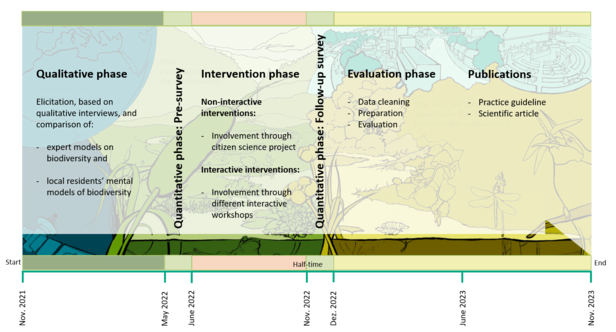Enhancing lay people’s understanding of biodiversity through participatory interventions
PI: Matthias Buchecker (Social Sciences in Landscape Research, WSL)
Co-PI: Nadja Contzen (Environmental Health Psychology, Eawag)
Co-investigators:
Janine Bolliger (Department of Landscape Dynamics, WSL)
Christopher Robinson (Department Aquatic Ecology, Eawag)

This project contributes to the Blue-Green Biodiversity Research Initiative – an Eawag-WSL collaboration focusing on Biodiversity at the interface of aquatic and terrestrial ecosystems.
Our project will evaluate effects of different forms of interactive involvement in river restoration projects on involved residents’ social learning and their psychological ownership and investigate whether this enhances acceptance of the river restoration projects. We will do so based on a quasi-experimental approach. That is, we will conduct a pre- and follow-up survey in several case regions in Switzerland measuring a) residents’ mental models of the issue, b) their sense of ownership of the local river area and c) their acceptance of river management alternatives. Between measurements, we will implement various interactive interventions.
The project will include the following steps:
Step 1:
Expert models and local residents’ mental models of biodiversity will be elicited and compared based on qualitative interviews.
Step 2:
A baseline survey measuring local residents’ understanding of biodiversity, their sense of ownership of local river areas, and acceptance of a local river restoration project will be conducted in every case region (N = 8000).
Step 3:
Respondents will be assigned to interventions related to the planning and implementation of river restorations. The interventions will include citizen science engagement and different types of interactive workshops.
Step 4:
Based on a follow-up survey, we will determine the effects of the interventions on residents’ mental models, their sense of ownership, and their acceptance of river restorations.
The main goal of the project is to elaborate a practice guideline that informs planners on the value added of interactively involving residents in river restoration and appraises the benefits of various inclusion methods. The project will conclude with the development of the practice guideline and the publication of a scientific article.
